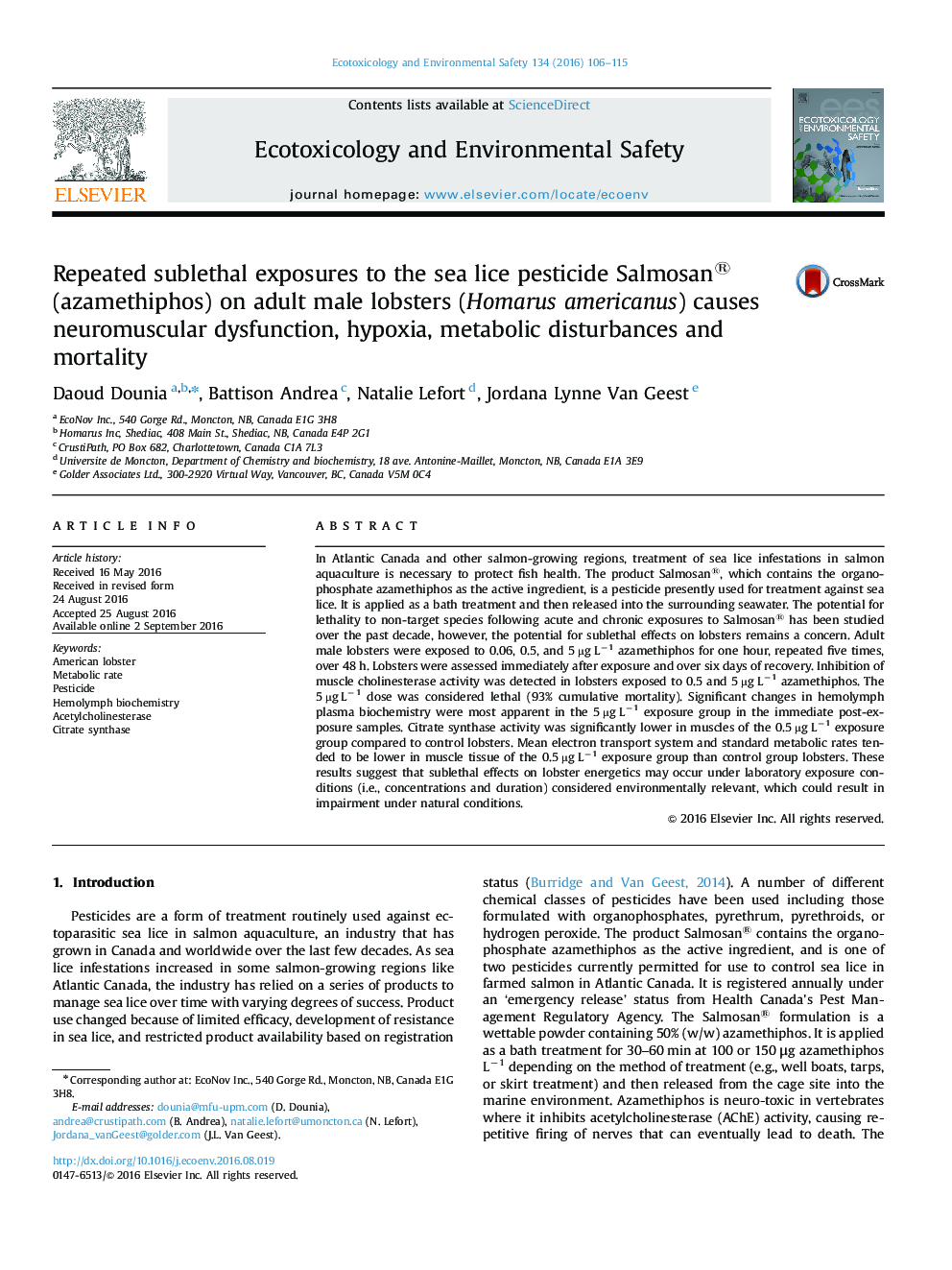| کد مقاله | کد نشریه | سال انتشار | مقاله انگلیسی | نسخه تمام متن |
|---|---|---|---|---|
| 4419133 | 1308446 | 2016 | 10 صفحه PDF | دانلود رایگان |

• Adult male lobsters exposed to 0.06, 0.5, and 5 µg L−1 azamethiphos (formulated as Salmosan®) for one hour, repeated five times, over 48 h.
• Inhibition of muscle cholinesterase activity detected in lobsters exposed to 0.5 and 5 µg L−1 azamethiphos.
• The 5 µg L−1 dose was considered lethal (93% cumulative mortality).
• Significant changes in hemolymph plasma biochemistry were most apparent in the 5 µg L−1 exposure group in the immediate post-exposure samples.
• Citrate synthase activity was significantly lower in muscles of the 0.5 µg L−1 exposure group compared to control lobsters.
In Atlantic Canada and other salmon-growing regions, treatment of sea lice infestations in salmon aquaculture is necessary to protect fish health. The product Salmosan®, which contains the organophosphate azamethiphos as the active ingredient, is a pesticide presently used for treatment against sea lice. It is applied as a bath treatment and then released into the surrounding seawater. The potential for lethality to non-target species following acute and chronic exposures to Salmosan® has been studied over the past decade, however, the potential for sublethal effects on lobsters remains a concern. Adult male lobsters were exposed to 0.06, 0.5, and 5 µg L−1 azamethiphos for one hour, repeated five times, over 48 h. Lobsters were assessed immediately after exposure and over six days of recovery. Inhibition of muscle cholinesterase activity was detected in lobsters exposed to 0.5 and 5 µg L−1 azamethiphos. The 5 µg L−1 dose was considered lethal (93% cumulative mortality). Significant changes in hemolymph plasma biochemistry were most apparent in the 5 µg L−1 exposure group in the immediate post-exposure samples. Citrate synthase activity was significantly lower in muscles of the 0.5 µg L−1 exposure group compared to control lobsters. Mean electron transport system and standard metabolic rates tended to be lower in muscle tissue of the 0.5 µg L−1 exposure group than control group lobsters. These results suggest that sublethal effects on lobster energetics may occur under laboratory exposure conditions (i.e., concentrations and duration) considered environmentally relevant, which could result in impairment under natural conditions.
Journal: Ecotoxicology and Environmental Safety - Volume 134, Part 1, December 2016, Pages 106–115